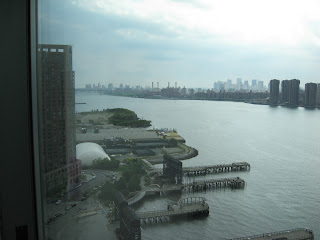More than 30 million U.S. households face one or more of the following housing problems:
Cost burdens: paying an excessively large percentage of income on housing costs. More than 13 million households pay more than 50 percent of their income for housing.
Overcrowding: the number of people living in the house is greater than the total number of rooms in the house. About 6.1 million households live in overcrowded conditions.1
Physical inadequacy: severe physical deficiencies, such as having no hot water, no electricity, no toilet, or neither a bathtub nor a shower. One out of every seven poor families lives in severely physically inadequate housing.2
MORE THAN 11 MILLION AMERICANS FACE WORST-CASE NEEDS
According to a report prepared for Congress in 2003 by the U.S. Department of Housing and Urban Development (HUD), 5.1 million American households face "worst-case housing needs." These families:
- • are renters receiving no government assistance; • make less than 50 percent of the area median income; • pay more than 50 percent of their income for rent and utilities and/or live in housing with severe physical deficiencies; • include some 3.6 million children, 1.6 million elderly adults and 1.3 million disabled adults.3
Of the 30 million households with housing problems, 14.5 million qualify for government aid, yet only 4.1 million are actually receiving any.
In fact, most of the U.S. government's housing subsidies do not benefit the poor. For example, in 1995, homeowners earning more than $100,000 per year received a total of $28.9 billion in federal income tax deductions on mortgage interest payments. By comparison, the entire 1999 budget of HUD was only $25 billion.4
AFFORDABLE HOUSING IS GETTING HARDER TO FIND
For every 100 very low-income renters, only 76 affordable rental units are currently available. Between 1997 and 2001, the number of available units declined 13 percent; there were 1.8 million fewer units that very low-income renters could afford. 5
To afford the fair-market price of the average U.S. two-bedroom rental unit, renters working full-time need to earn at least $15.28 per hour. That's almost three times the current federal minimum wage, and 37 percent more than renters needed to earn in 1999. 6
For the 14.8 million U.S. households that make $10,000 or less per year, a year's rent costs about 70 percent of their annual income.7
More than 2 million housing units have "severe physical problems." This includes 1.4 million that have severe plumbing problems. About 1.6 million have one or more rooms without electrical outlets.8
These statistics are not the latest but with this information ,one can see the overall problem in America.I will seek newer statistics and compare them with the ones presented.Poor Governor Christie must have missed this information while covering for his brother's felony case.

No comments:
Post a Comment